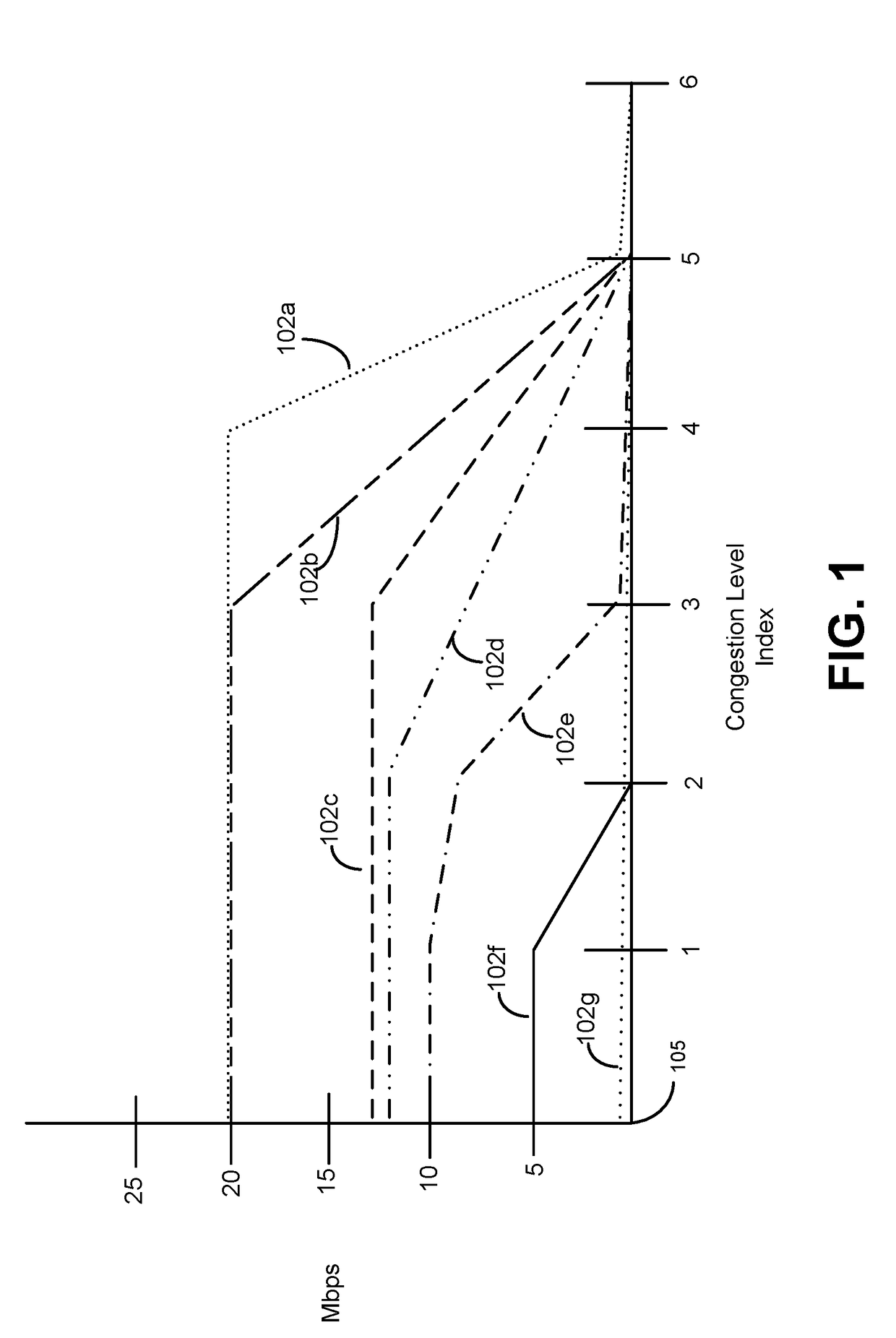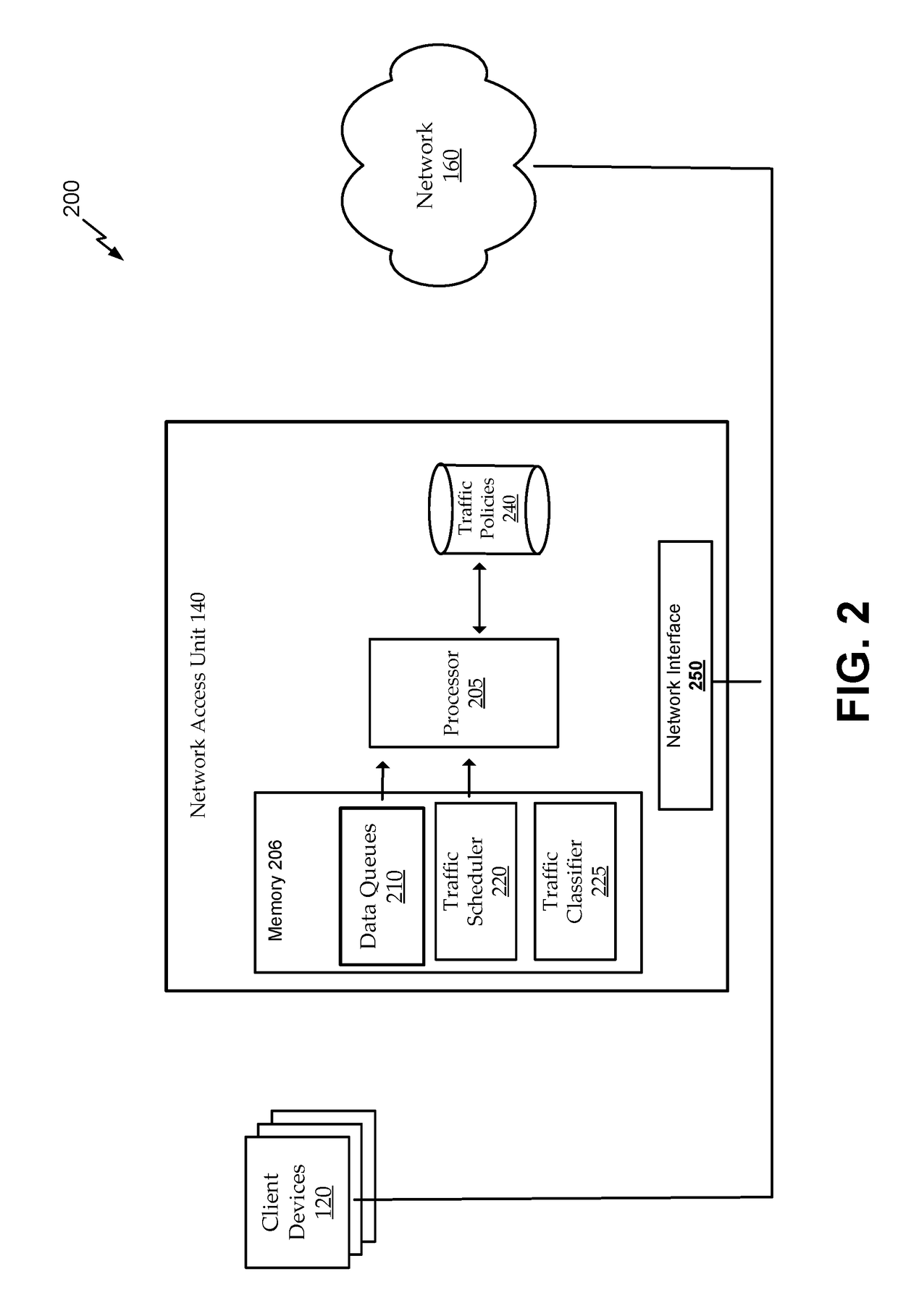Methods and systems for multi-level network capacity allocation
a network capacity and multi-level technology, applied in the field of multi-level network capacity allocation, can solve the problems of poor user experience, buffering/or other delays of other data, etc., and achieve the effect of high level of service, low level of service, and high level of servi
- Summary
- Abstract
- Description
- Claims
- Application Information
AI Technical Summary
Benefits of technology
Problems solved by technology
Method used
Image
Examples
Embodiment Construction
” one will understand how the disclosed examples provide advantages that include improved allocation of available network capacity across a plurality of service flows. In some aspects, the allocation of available network capacity may be performed in multiple cycles. For example, first, a minimum amount specific to each service flow type may be allocated to each service flow during a first allocation cycle. This ensures each service flow receives its minimum allocation during the allocation cycle. The minimum commitment to each service flow may vary across service flows. For example, high priority service flows may receive a larger minimum commitment than lower priority service flows.
[0005]After the minimum commitment to each service flow is satisfied, variable amounts of allocation may be provided to each service flow in multiple phases. During each progressive phase, a proportion allocated to each service flow may vary. For example, in a first progressive phase, a first service flo...
PUM
 Login to View More
Login to View More Abstract
Description
Claims
Application Information
 Login to View More
Login to View More - R&D
- Intellectual Property
- Life Sciences
- Materials
- Tech Scout
- Unparalleled Data Quality
- Higher Quality Content
- 60% Fewer Hallucinations
Browse by: Latest US Patents, China's latest patents, Technical Efficacy Thesaurus, Application Domain, Technology Topic, Popular Technical Reports.
© 2025 PatSnap. All rights reserved.Legal|Privacy policy|Modern Slavery Act Transparency Statement|Sitemap|About US| Contact US: help@patsnap.com



